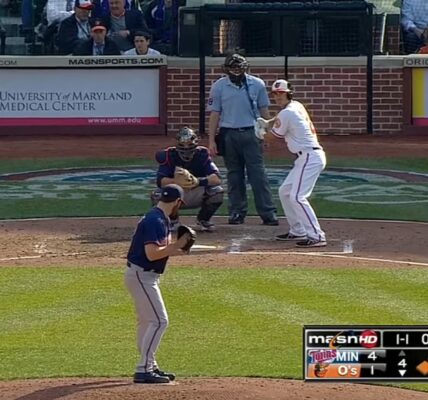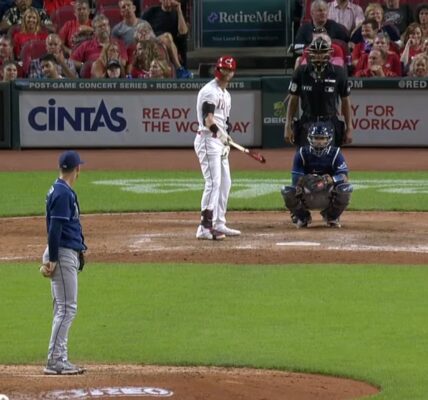Understanding and effectively implementing batting order strategy in baseball is crucial, blending artistic insight with scientific analysis to impact the game’s dynamic and potential success. This article delves into the tactical aspects of batting lineup construction and how it can significantly influence game outcomes.
Analyzing Player Capabilities for Lineup Creation
Before constructing a batting lineup, coaches must assess the strengths and weaknesses of their players. This initial analysis forms the foundation of a strategic batting order, crucial for enhancing team performance.
Strategic Placement of Hitters in the Batting Order
- Leadoff Hitter: The leadoff, or first batter, plays a pivotal role in setting the game’s pace. Ideal candidates for this position excel in hitting and base stealing, aiming to reach base through hits or walks;
- Second Spot: The second batter should consistently make contact with the ball, minimizing strikeouts. This player aids the leadoff hitter in advancing bases, often skilled in hit-and-run tactics and sacrifice bunts;
- Third Position (3 Hole): Typically occupied by the team’s strongest hitter, this player is expected to deliver high batting averages and powerful hits, driving in runners on base;
- Cleanup (Fourth Position): The cleanup hitter, positioned fourth, is usually the team’s best power hitter, tasked with driving in the first three batters;
- Fifth Position: This player focuses on bringing home any baserunners left by the cleanup hitter, often excelling in extra-base hits;
- Sixth and Seventh Spots: These positions can be challenging, especially for youth coaches. The sixth hitter should make good contact, while the seventh is often skilled in bunting and hitting singles;
- Eighth Position: Ideal for developing players, this spot is for those still honing their hitting skills;
- Ninth Player: Typically a strong fielder but weaker hitter, this player should be adept at bunting and running.
Historical Examples of Exceptional Batting Lineups
The article highlights some of the most formidable batting lineups in Major League Baseball history, including the 1927 Yankees, 1953 Brooklyn Dodgers, 1929 Philadelphia Phillies, 1976 Cincinnati Reds, and 1999 Texas Rangers.
Sabermetric Approach to Batting Order
Sabermetrics offers a data-driven approach to constructing a batting order, emphasizing players with high Base Percentages (OBP), Weighted Runs Created Plus (wRC+), Slugging Percentages, and other advanced metrics.
Comparative Analysis: Traditional vs. Sabermetric Batting Order Strategies
To enhance the article’s value, I’ve included a unique comparative table that contrasts traditional batting order strategies with sabermetric approaches. This table provides a clear visual representation of the differences between these two methodologies, offering a deeper understanding of their respective advantages and applications in baseball.
| Position | Traditional Strategy | Sabermetric Approach |
|---|---|---|
| 1st | Leadoff hitter excels in hitting and stealing bases | Player with the highest On Base Percentage |
| 2nd | Consistent contact hitter, low strikeouts | High On Base Percentage and wRC+ player |
| 3rd | Best overall hitter with high batting average and power | Player with high wRC+ and well-rounded hitting abilities |
| 4th | Best power hitter for RBIs | Power hitter with high Slugging percentage, HR, and ISO |
| 5th | Drives in remaining baserunners, capable of extra-base hits | Power hitter with high wRC+ and Slugging percentage |
| 6th | Good contact hitter | Player with high On Base Percentage and Stolen Bases |
| 7th | Skilled in bunting and hitting singles | Average overall hitter |
| 8th | Developing player with potential | Average overall hitter |
| 9th | Good fielder, weak hitter but good bunter | Worst hitter on the team |
In-Depth Analysis of Leadoff Hitter Strategies
An in-depth exploration of leadoff hitter strategies in baseball reveals the critical role of this position in influencing game dynamics. Traditionally, the leadoff hitter is selected for their proficiency in hitting and base stealing, aiming to provide the team with an early advantage by reaching base quickly. This player sets the game’s tone, requiring a combination of speed, batting skill, and strategic awareness. In a sabermetric context, however, the leadoff hitter is chosen primarily for their On Base Percentage (OBP). The emphasis here is on the player’s ability to reach base by any means, be it hits, walks, or hit-by-pitches. This approach values a player’s overall efficiency in getting on base over traditional metrics like batting average or speed. The leadoff hitter’s role, irrespective of the strategy employed, is pivotal in setting up scoring opportunities for the following batters, thus having a significant impact on the team’s offensive momentum.
Evolution of Cleanup Hitter Role in Modern Baseball
The cleanup hitter, traditionally the fourth batter in the lineup, has evolved significantly in modern baseball. Historically, this position was reserved for the team’s best power hitter, tasked with driving in runs and capitalizing on any scoring opportunities created by the first three batters. The cleanup hitter’s role was predominantly to produce home runs and extra-base hits, often being the team’s most intimidating offensive player. In contemporary baseball, influenced by sabermetric principles, the cleanup hitter’s role is more nuanced. While power remains a key attribute, emphasis is also placed on metrics like Slugging Percentage, Home Runs (HR), and Isolated Power (ISO). This approach seeks to quantify the hitter’s effectiveness more accurately, prioritizing players who can consistently produce high-value hits. This shift reflects a broader trend in baseball, where data-driven insights are increasingly shaping decisions, from player selection to in-game tactics, underscoring the sport’s strategic and analytical evolution.
Understanding the ‘E’ in Baseball: Error and Its Impact on the Game
In baseball, the letter ‘E’ is commonly used to signify an ‘error,’ a fundamental concept that has significant implications for both the game’s strategy and statistical record-keeping. This unique section delves into what an error entails, how it affects the game, and its role in the broader context of baseball strategy and analysis.
An error in baseball occurs when a fielder’s mistake allows a batter or baserunner to reach a base or advance to an extra base that they would not have reached under ordinary effort by the defense. Errors can include mishandling a ball, making a poor throw, or any other misplay that the official scorer deems could have been avoided with standard defensive effort. The ‘E’ notation is followed by the number of the player’s position who committed the error, such as ‘E5’ for an error made by the third baseman.
Errors are significant because they impact the game in several ways:
- Offensive Advantage: Errors provide the offensive team with an opportunity to prolong their at-bats, potentially leading to more runs scored;
- Defensive Accountability: They highlight defensive weaknesses or lapses, informing coaching decisions and player development;
- Statistical Impact: Errors affect a player’s fielding statistics and can impact a pitcher’s earned run average (ERA), as runs scored due to errors are not counted as earned runs.
In the context of batting order strategy, understanding and anticipating potential errors can influence lineup decisions and in-game tactics. For example, placing speedier players in certain lineup spots may increase the pressure on the opposing defense, potentially inducing errors. Conversely, teams with strong defensive skills may exploit the weaknesses of opponents who are prone to committing errors.
Video Guide
To answer all your questions, we have prepared a video for you. Enjoy watching it!
Conclusion
A successful batting order is always contingent on the players’ skill levels. Grouping the best hitters at the start of the lineup is a common and effective strategy. Integrating left-handed and right-handed batters and positioning a competent hitter behind the best hitter to deter walks are additional strategic elements.




